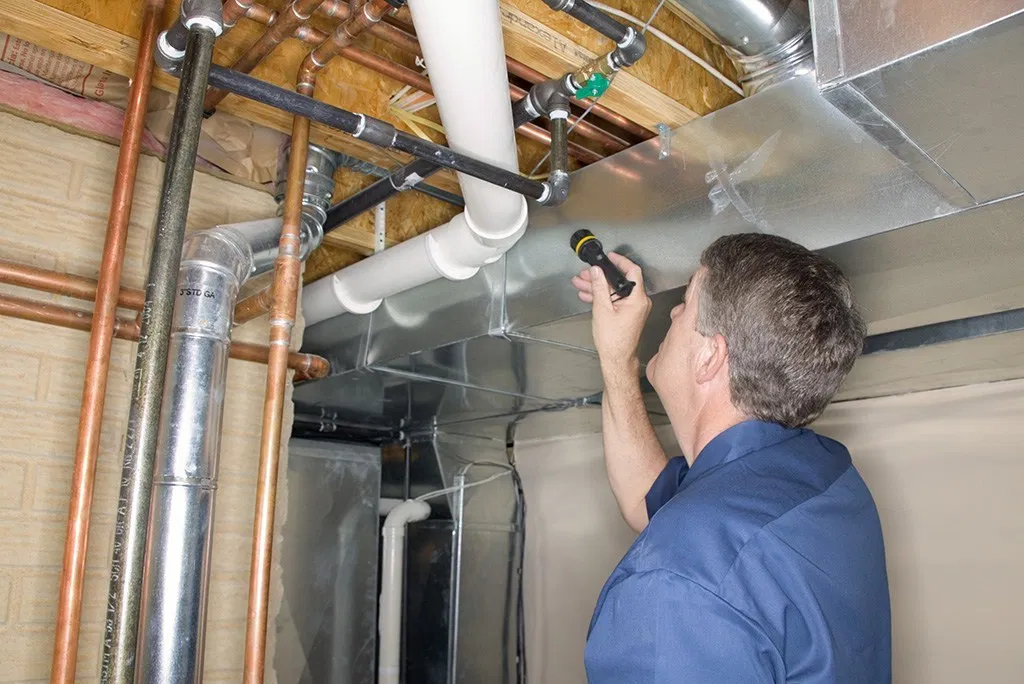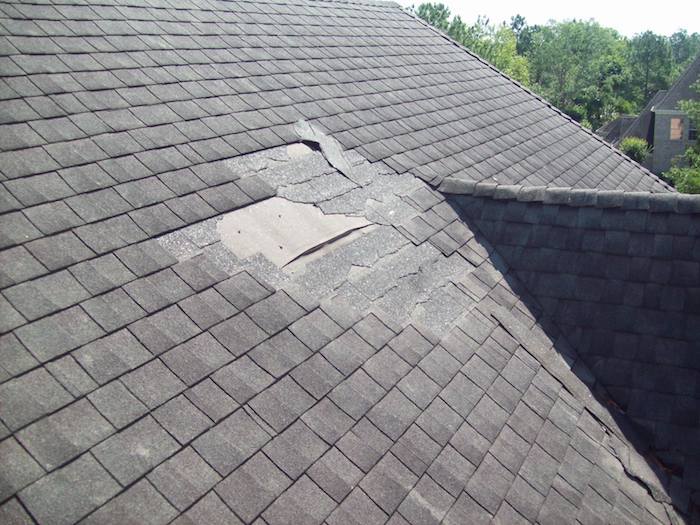A Bad Report: Red Flags to Look Out for in a Home Inspection Report
Like most homes, you should expect your current or future abode to have at least some minor cosmetic issues, like loose siding or peeling paint. While these issues are easy enough to repair, some conditions are more difficult and costly to address. You may want to have the homeowner make the fix before you go through with the sale, or you may want to negotiate your price to cover the cost of completing the repairs yourself. In some cases, you may even want to hire a specialist to look at the problem before moving forward with the purchase.
So, before you write that check and sign those papers, be sure to look out for these seven red flags on your home inspection report.
Pests
It’s important to know that not all home inspectors are qualified or licensed to do the pest portion of the inspection. While identifying an active termite infestation is relatively easy, other pests and wood destroying organisms (WDOs) take training and expertise to identify properly. Look for a pest control professional near you who is familiar with regional species and is licensed to perform a home inspection for sales purposes.
Mold
If your inspector finds water damage or mold in your home, that’s a red flag. In truth, most homes will have some mold in crawl spaces and attics, and not all mold is bad for your health. However, mold can indicate other problems, like water leaks from the roof or major appliances, that could be costly to correct. So, finding the source of the mold is imperative. Otherwise, the problem could worsen, and you could end up with a health hazard. A certified mold inspector near you can tell you what type of mold you have, how harmful it is, and what to do about it.
Fireplace & Chimney
Homes with fireplaces are almost always in high demand. However, if the fiery feature hasn’t been cared for properly, it may be a liability instead of a luxury. A clogged flue or a leaky chimney is a fire hazard. That’s why experts recommend having your fireplace and chimney inspected annually, and that’s why you may want to consider hiring a local fireplace inspector who can evaluate the safety of the fireplace in a home you are considering buying. If they identify any problems, the same pro can usually quote the necessary repairs, allowing you to negotiate the purchase price accordingly.
Electrical
A broken outlet or a flood light that doesn’t work is one thing, but outdated wiring or too little voltage is cause for concern. In addition to the inconvenience of not being able to hook up all your electronics and appliances, problems with your electrical setup can increase your risk for a home fire. Updating your wiring and upgrading your electrical service are costly projects that require permits, professionals, and inspections to bring up to code. You’ll want to address these major issues with the seller’s agent before going through with the transaction.
Foundation
If your home inspection report lists concerns with the integrity of your home’s foundation, don’t ignore them. Contrary to popular belief, not all foundation issues are expensive to fix. Minor foundation cracks could cost you as little as $500 to repair. However, major structural problems that require stabilization using hydraulic piers can cost $10,000 or more. Depending on what’s wrong, you may want to renegotiate your purchase agreement.

Water Damage
“The three biggest things that are bad for a house are water, water, and water,” said Buell. When water gets into a home’s vicinity, it can cause a range of major issues, most of which are red flags for buyers. Water in the basement can be a sign of structural damage, roof leaks or plumbing issues can cause water stains on walls and ceilings.
Damage to the Roof
A strong roof is necessary to protect a home from weather elements, so a damaged roof could seriously affect the sale price of your house. A roof can last for up to 25 years but it’s wise for homeowners to inspect their roofs once a year.
Plumbing Related Problems
As previously mentioned, water is a homeowner’s worst enemy. It can be hard to notice major plumbing issues until an inspector comes in. Redoing a house’s plumbing can cost tens of thousands of dollars, and minor leaks or rusted pipes could be a sign of bigger plumbing issues.

How to Prepare for a Home Inspection
As a seller, it’s common to get nervous during the home inspection process. You don’t want the deal to fall through, nor do you want to be stuck with the cost and burden of repairs if your buyer requests them as a contingency. Fortunately, there are some things you can do to prepare for the inspection.
Provide open access to areas that need to be checked
Make sure that the home inspector has easy access throughout the property. If they can’t get to an area, they can’t inspect it, and that will be a red flag for buyers. Clear away any clutter impeding access to areas or systems that the inspector needs to take a look at, including basements, attics, furnace rooms, and under sinks.
Clear the perimeter
In addition to checking the interior functioning of your home, the inspector is also going to be looking at the exterior, including siding, trims, and caulking around windows and doors. You’ll want to leave areas around your home clear of plant growth, trash cans, and stored items so they can get an unimpeded look.
Replace any bulbs that are out
A blown bulb suggests two things to a home inspector: either the bulb itself is out, or there’s something faulty in the fixture’s wiring. The inspector will either have to waste time determining whether a fixture is inoperable or they’ll simply note that there’s a possible defect without looking further into it. Avoid both of these scenarios by making sure that all of your bulbs are in working order.
Ensure the fuse box is properly labeled
A confusing fuse box is frustrating for homeowners and home inspectors alike. Double check that each switch in the box is labeled clearly and correctly, and replace any labels that are incorrect or difficult to read.

Be Honest with Inspector
First off, the home inspector should ask if there are any major issues with the home. Be honest and tell them what you know. They will find the issue either way. Worst-case scenario, they find an obvious issue and tell the potential buyers. The buyers now see you as a dishonest seller and may reconsider, even if the home passes the inspection. As always, it’s better to be honest up front.
Remove Clutter Around the Home
Sometimes, a happy home inspector can make all the difference. Therefore, make sure it’s easy to move freely about the home. If you have heavy boxes in front of the attic or around the furnace, move them before the inspection. Clutter can’t hide home issues, but it can certainly make for an unhappy inspector and longer examination.
Monitor the Exterior
Homeowners care about their curb appeal and that means the home inspector will examine the exterior as well. They will look at the landscaping, grading, driveways, fences, windows and sidewalks. Other than a major grading or driveway issue, all these issues can be fixed yourself. Do yourself a favor and make sure your home’s exterior looks better than ever
The 7 Most Common Home Inspection Problems
Basement dampness—water stains, powdery residue on walls, mold or mildew.
- The cure: Repair gutters to channel water away from house; apply waterproof coatings to basement.
Roof problems—brittle or curled shingles; broken or missing flashings.
- The cure: Apply new shingle, or tear off if needed (usually after three re-roofs ); replacing flashings, especially around chimneys and other protrusions.
Foundation flaws—cracks in foundation, sloping floors, sticking doors or windows.
- The cure: Fill cracks with silicon caulking or epoxy; apply waterproof coating to exterior.
Poor upkeep—needs repainting, worn carpeting, cracked driveway.
- The cure: Give the house a minor facelift.
Faulty plumbing—inadequate water pressure, slow drains, signs of leaks on ceilings.
- The cure: Clean and rout drains; reseat toilet with new wax ring, repair leaks.
Poor ventilation—extreme heat in attic, vapor condensation.
- The cure: Ensure that roof soffits are not blocked; install additional roof vents; vent bathroom and kitchen fans outside.
Defective heating—cracks in the heat exchanger or water tank; carbon monoxide leaks.
- The cure: Reseal chimney flues; replace sacrificial anode in water heater.